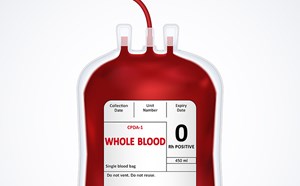
Journal Watch Article Interests
Dr. Helene Okpere, MD
Dr. Helene Okpere provides this issue’s Journal Watch. Dr. Okpere is a recent graduate of Emory’s Emergency Medicine Residency Program, and she participated in our Tactical Medicine Selective. Dr. Okpere set out to answer this question: what is known about non-lethal injuries to law enforcement officers? She noted that studies and data are relatively uncommon in her search of the literature which makes providing evidence-based recommendations challenging despite law enforcement being a field with higher rates of injury than the general population.
Lyons K, Radburn C, Orr R, Pope R. A Profile of Injuries Sustained by Law Enforcement Officers: A Critical Review. International Journal of Environmental Research and Public Health. 2017 Feb 3;14(2):142. doi: 10.3390/ijerph14020142. PMID: 28165373; PMCID: PMC5334696.
https://www.ncbi.nlm.nih.gov/pmc/articles/PMC5334696/
This paper is a critical narrative review of 16 studies via a systematic search of key databases using search terms like police or law enforcement. They excluded studies involving military police for example as well as injuries caused by the police officer themselves. The article discussed injuries to law enforcement officers which mainly consisted of upper extremity injuries due to non-compliant offenders. The most common types of injuries were soft tissue sprains/strains. Given the nature of their job, physical demands include running varied distances, carrying injured/unconscious people, self-defense, etc. these injuries are largely expected and are largely comparable to similar studies of military and firefighters...
Tiesman HM, Gwilliam M, Konda S, Rojek J, Marsh S. Nonfatal Injuries to Law Enforcement Officers: A Rise in Assaults. Am J Prev Med. 2018 Apr;54(4):503-509. doi: 10.1016/j.amepre.2017.12.005. Epub 2018 Feb 1. PMID: 29395571.
https://pubmed.ncbi.nlm.nih.gov/29395571/
This article was intended for providing national trends of nonfatal injuries to law enforcement officers from 2003-2014. As the source data is a decade old, it is somewhat outdated, but if given the scarcity of data in this space it still seems relevant. During that time, over 650,000 officers were treated in the ED for nonfatal injuries which was 3X higher than other workers in the US. Their injuries were most commonly caused by assaults or violent acts, bodily exertion, and transportation incidents (motor vehicle crashes). Younger officers were more likely injured. As noted in the title, the rates of assault, in contrast to the rate of other injuries which remained stable, as the cause of injury grew in the period of 2003-2011.
Orr R, Canetti EFD, Pope R, Lockie RG, Dawes JJ, Schram B. Characterization of Injuries Suffered by Mounted and Non-Mounted Police Officers. International Journal of Environmental Research and Public Health. 2023; 20(2):1144. https://doi.org/10.3390/ijerph20021144
https://www.mdpi.com/1660-4601/20/2/1144
This article addresses an issue we may not often consider. It compared nonfatal injuries to mounted vs. non-mounted police officers. Data was collected from 2014 to 2020, so recent and likely still relevant. There were roughly 35k reported injuries with 99% of them being non-mounted police officer injuries, with the most common being physical assault. Nevertheless, the most common injuries for mounted police included slips, trips, falls (especially from heights), and repetitive tasks/movements. The activity they were most likely doing was animal handling (horse). Similar to the prior articles, sprains, strains were common injuries in both mounted and non-mounted officers in this study. An interesting find in this study was that mounted officers appeared to suffer more of their injuries within the first 4 hours of their shift, while non-mounted officers were more likely to be injured later in their shifts. There is no clear reason for these differences.
Lyons K, Stierli M, Hinton B, Pope R, Orr R. Profiling lower extremity injuries sustained in a state police population: a retrospective cohort study. BMC Musculoskelet Disord. 2021 Jan 26;22(1):115. doi: 10.1186/s12891-021-03986-3. PMID: 33499859; PMCID: PMC7839182.
https://pubmed.ncbi.nlm.nih.gov/33499859/
In this article, lower extremity injuries among Australian police officers between 2009 and 2016 were reviewed. In all, 65,579 injuries to officers were reviewed and 12,452 lower extremity injuries were included. The knee was the most common site of injury (31.4%), injury during arrest was the most common activity (24.2%), slips/trips/falls were the most common mechanism of injury (37.8%) and strain/sprains were the most common diagnosis (42.3%). Interestingly, female officers were more likely to be injured while walking/running (17.9% vs 9.3% for male officers) and were less likely to injured during arrests (16.5% vs. 27.1%). Officers were most likely to be injured in the middle third of their shifts.



